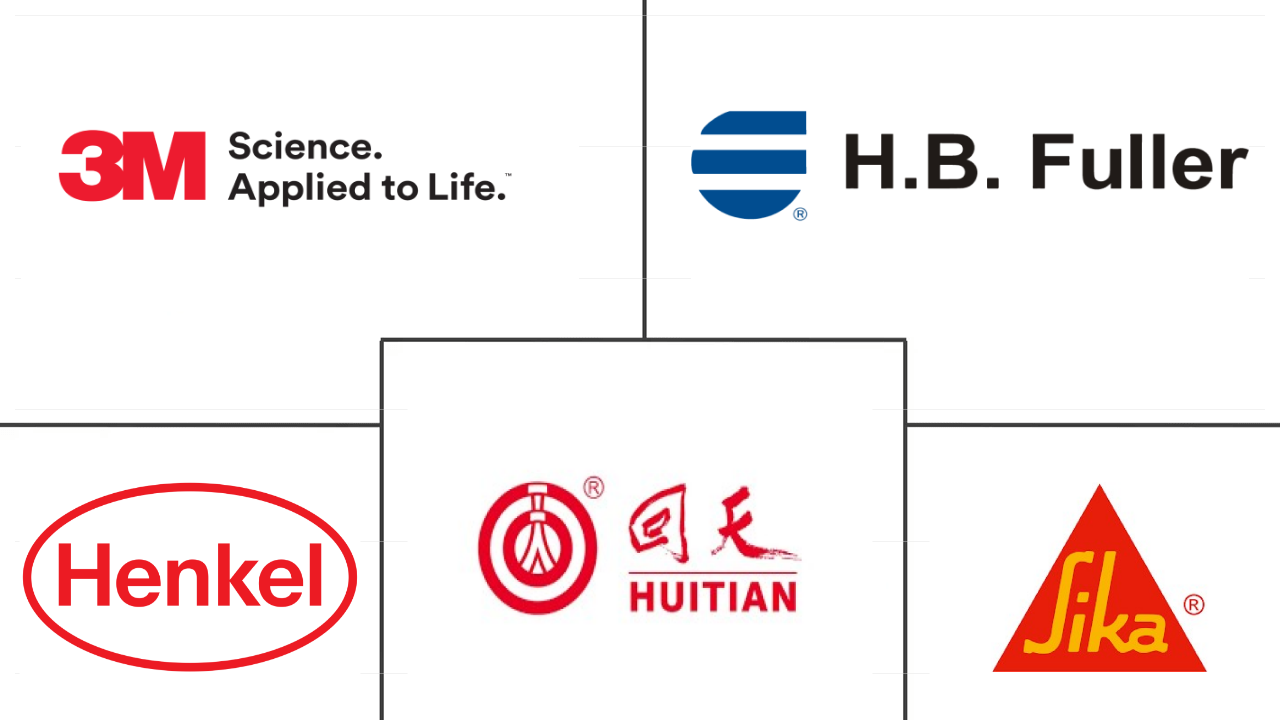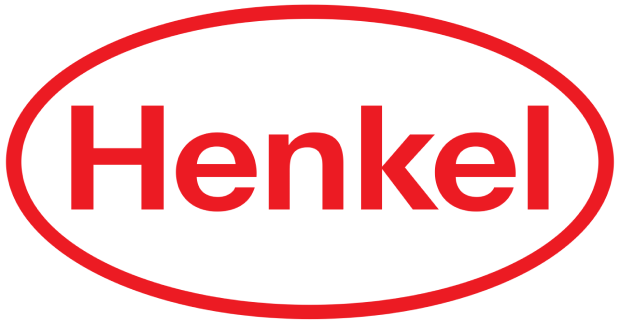Market Size of asia-pacific epoxy adhesive Industry
|
|
Study Period | 2017 - 2028 |
|
|
Market Size (2024) | USD 2.59 Billion |
|
|
Market Size (2028) | USD 3.31 Billion |
|
|
Largest Share by End User Industry | Automotive |
|
|
CAGR (2024 - 2028) | 6.31 % |
|
|
Largest Share by Country | China |
Major Players |
||

|
||
|
*Disclaimer: Major Players sorted in no particular order |
Asia-Pacific Epoxy Adhesive Market Analysis
The Asia-Pacific Epoxy Adhesive Market size is estimated at 2.59 billion USD in 2024, and is expected to reach 3.31 billion USD by 2028, growing at a CAGR of 6.31% during the forecast period (2024-2028).
2.59 Billion
Market Size in 2024 (USD)
3.31 Billion
Market Size in 2028 (USD)
4.86 %
CAGR (2017-2023)
6.31 %
CAGR (2024-2028)
Largest Market by End-user Industry
30.93 %
value share, Automotive, 2023
Automotive is the dominant end-user industry in the market owing to the wide range of applications for structural bonding and assembly operations.
Largest Market by Technology
63.82 %
value share, Reactive, 2023
Reactive is the largest technology type in the market owing to its wide range of applications across major end-user industries, including automotive, woodworking and joinery, and building and construction.
Largest Market by Country
57.15 %
value share, China, 2023
China holds the highest share in the Asia-Pacific epoxy adhesives market owing to the strong presence of manufacturers in the country's automotive, woodworking and joinery, and building and construction industries.
Fastest Growing Market by Country
6.85 %
Projected CAGR, India, 2024-2028
Due to the increasing population and rapid urbanization, India is likely to be the fastest-growing country in the market during the forecast period.
Leading Market Player
9.15 %
market share, Henkel AG & Co. KGaA, 2021

Henkel is the leading epoxy adhesives manufacturer in the Asia-Pacific region. This can be attributed to the popularity of its products in widespread industries, including building and construction, automotive, aerospace, and woodworking.
Increasing vehicle production which is expected to reach 66 million units by 2028 in the region is likely to drive the demand for epoxy adhesives
- Epoxy adhesives are thermosetting resins that demonstrate high strength and low shrinkage during curing. These adhesives are tough and resistant to chemicals and environmental damage. Epoxy adhesives offer excellent adhesion to various substrates, superior resistance solvents, and good electrical insulation. In addition, epoxy adhesives offer high hardness to the bond, which is more than 80 shore.
- The consumption of epoxy adhesives shrunk by 9.66% in 2020 compared to 2019, mainly due to the impact of the COVID-19 pandemic in many countries, including China, India, Japan, and South Korea. Production stopped in most countries due to nationwide lockdowns, supply chain disruptions, and economic slowdowns, which resulted in a decline in the consumption of epoxy adhesives. In 2021, the economic recovery in the countries caused a rise in the production of epoxy adhesives, which registered a growth of 36.8 million in volume.
- China is the major market for epoxy adhesives in the region, followed by Japan and India. China's demand for epoxy adhesives was nearly USD 1.2 billion in 2021. Automotive and construction are the major end-user industries that use epoxy adhesives for different applications.
- Automotive is the region's largest consumer industry for epoxy adhesives, owing to the rising vehicle production in the country. Epoxy adhesive is mainly used in structural applications and offers the highest tensile strength, around 35-41 N/mm², among all other resin-based adhesives to bond metal, glass, and plastic. It is expected that vehicle production will reach 66 million units in the region in 2028 from 47.9 million units in 2021. Rising vehicle production is expected to drive the demand for epoxy adhesives over the coming years.
Increasing demand for electronic components for vehicles is likely to boost the demand for epoxy adhesives
- When evaluating the efficiency of an epoxy adhesive, it is beneficial to examine the general composition of the chemicals that comprise it. Polymerization of a mixture of two initial components, the resin and the hardener, produces epoxy. Curing begins when the resin is combined with a specific catalyst. Epoxy adhesives stick to a wide range of materials, and their qualities are determined by the system's chemistry and the type of cross-linking available. Exceptional chemical and heat resistance, great adhesion and water resistance, and satisfactory mechanical and electrical insulating qualities are among the most significant performance parameters.
- Epoxy adhesives, the most generally used structural type adhesive, are commonly available as one-component or two-component systems. One-component epoxy adhesives are typically cured at temperatures ranging from 250 to 300°F, resulting in a product with great strength, strong adherence to metals, and exceptional environmental and harsh chemical resistance.
- Across all the end-use sectors, automotive is the leading consumer of epoxy globally, holding a share of about 35.7%, followed by building and construction, healthcare, woodworking, and aerospace, with shares of approximately 19.4%, 6.3%, 4.7%, and 2.1%, respectively. The other end-use industries hold about 31.1%%. Across the automotive industry, the rising adoption of sustainability is expected to increase EV production across the Asia-Pacific region. Owing to this reason, emerging nations are moving toward limiting the consumption of conventional energy in the automotive industry. The factor tends to increase the demand for electronic components for vehicles and, thus, boost the consumption of epoxy adhesives across the region.
Asia-Pacific Epoxy Adhesive Industry Segmentation
Aerospace, Automotive, Building and Construction, Footwear and Leather, Healthcare, Packaging, Woodworking and Joinery are covered as segments by End User Industry. Reactive, Solvent-borne, UV Cured Adhesives, Water-borne are covered as segments by Technology. Australia, China, India, Indonesia, Japan, Malaysia, Singapore, South Korea, Thailand are covered as segments by Country.
- Epoxy adhesives are thermosetting resins that demonstrate high strength and low shrinkage during curing. These adhesives are tough and resistant to chemicals and environmental damage. Epoxy adhesives offer excellent adhesion to various substrates, superior resistance solvents, and good electrical insulation. In addition, epoxy adhesives offer high hardness to the bond, which is more than 80 shore.
- The consumption of epoxy adhesives shrunk by 9.66% in 2020 compared to 2019, mainly due to the impact of the COVID-19 pandemic in many countries, including China, India, Japan, and South Korea. Production stopped in most countries due to nationwide lockdowns, supply chain disruptions, and economic slowdowns, which resulted in a decline in the consumption of epoxy adhesives. In 2021, the economic recovery in the countries caused a rise in the production of epoxy adhesives, which registered a growth of 36.8 million in volume.
- China is the major market for epoxy adhesives in the region, followed by Japan and India. China's demand for epoxy adhesives was nearly USD 1.2 billion in 2021. Automotive and construction are the major end-user industries that use epoxy adhesives for different applications.
- Automotive is the region's largest consumer industry for epoxy adhesives, owing to the rising vehicle production in the country. Epoxy adhesive is mainly used in structural applications and offers the highest tensile strength, around 35-41 N/mm², among all other resin-based adhesives to bond metal, glass, and plastic. It is expected that vehicle production will reach 66 million units in the region in 2028 from 47.9 million units in 2021. Rising vehicle production is expected to drive the demand for epoxy adhesives over the coming years.
| End User Industry | |
| Aerospace | |
| Automotive | |
| Building and Construction | |
| Footwear and Leather | |
| Healthcare | |
| Packaging | |
| Woodworking and Joinery | |
| Other End-user Industries |
| Technology | |
| Reactive | |
| Solvent-borne | |
| UV Cured Adhesives | |
| Water-borne |
| Country | |
| Australia | |
| China | |
| India | |
| Indonesia | |
| Japan | |
| Malaysia | |
| Singapore | |
| South Korea | |
| Thailand | |
| Rest of Asia-Pacific |
Asia-Pacific Epoxy Adhesive Market Size Summary
The Asia-Pacific epoxy adhesive market is poised for significant growth, driven by its robust applications in the automotive and construction sectors. Epoxy adhesives, known for their high strength, low shrinkage, and resistance to chemicals and environmental damage, are increasingly utilized in structural applications due to their superior adhesion to various substrates. The automotive industry, in particular, is a major consumer of these adhesives, with rising vehicle production in countries like China, Japan, and India fueling demand. The region's automotive sector is also witnessing a shift towards electric vehicles, further boosting the need for epoxy adhesives in electronic component assembly. Additionally, the construction industry, especially in China, is experiencing substantial growth, supported by government investments and urbanization trends, which in turn is expected to drive the demand for epoxy adhesives.
The market landscape is characterized by a fragmented structure, with key players such as 3M, H.B. Fuller Company, Henkel AG & Co. KGaA, Hubei Huitian New Materials Co. Ltd, and Sika AG holding significant shares. These companies are actively expanding their operations and product offerings to cater to the growing demand in the region. For instance, Sika has plans to establish a new technology center and manufacturing facility in India, while H.B. Fuller has entered strategic agreements to promote sustainable adhesive solutions. Despite the challenges posed by the COVID-19 pandemic, which led to a temporary decline in consumption, the market is on a recovery path, with increasing production and consumption anticipated over the forecast period. The Asia-Pacific epoxy adhesive market is thus set to benefit from the region's economic recovery, industrial growth, and technological advancements.
Asia-Pacific Epoxy Adhesive Market Size - Table of Contents
-
1. MARKET SEGMENTATION (includes market size in Value in USD and Volume, Forecasts up to 2028 and analysis of growth prospects)
-
1.1 End User Industry
-
1.1.1 Aerospace
-
1.1.2 Automotive
-
1.1.3 Building and Construction
-
1.1.4 Footwear and Leather
-
1.1.5 Healthcare
-
1.1.6 Packaging
-
1.1.7 Woodworking and Joinery
-
1.1.8 Other End-user Industries
-
-
1.2 Technology
-
1.2.1 Reactive
-
1.2.2 Solvent-borne
-
1.2.3 UV Cured Adhesives
-
1.2.4 Water-borne
-
-
1.3 Country
-
1.3.1 Australia
-
1.3.2 China
-
1.3.3 India
-
1.3.4 Indonesia
-
1.3.5 Japan
-
1.3.6 Malaysia
-
1.3.7 Singapore
-
1.3.8 South Korea
-
1.3.9 Thailand
-
1.3.10 Rest of Asia-Pacific
-
-
Asia-Pacific Epoxy Adhesive Market Size FAQs
How big is the Asia-Pacific Epoxy Adhesive Market?
The Asia-Pacific Epoxy Adhesive Market size is expected to reach USD 2.59 billion in 2024 and grow at a CAGR of 6.31% to reach USD 3.31 billion by 2028.
What is the current Asia-Pacific Epoxy Adhesive Market size?
In 2024, the Asia-Pacific Epoxy Adhesive Market size is expected to reach USD 2.59 billion.

